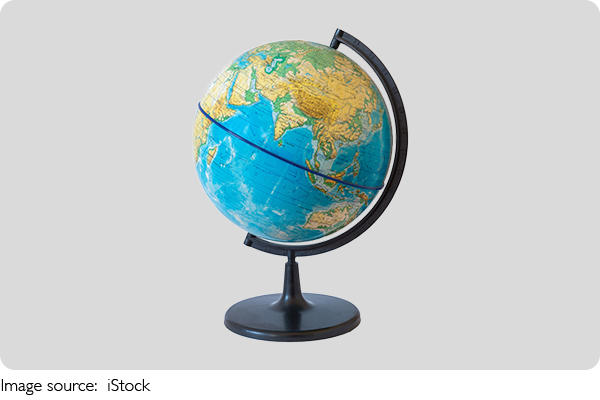World Through a Globe

In today’s interconnected world, where knowledge of global geography and cultural diversity is crucial, the use of world globes in schools plays a key role in shaping well-rounded, informed individuals.
These globes go beyond being decorative objects; they serve as powerful educational tools that inspire curiosity, promote understanding, and foster a sense of global citizenship.
This article will explore the significance of world globes in schools and highlight the benefits they bring to students' learning experiences.

Tangible Representation of the World
World globes provide students with a tangible and interactive representation of the planet. By offering a three-dimensional view of continents, countries, oceans, and physical features, globes help students grasp the true scale and relationships between different regions. Physically rotating and examining a globe allows students to develop a spatial understanding that goes beyond what flat maps or digital screens can offer.
Geographic Literacy
One of the primary benefits of incorporating world globes in schools is the promotion of geographic literacy. Globes support the teaching and learning of key geographical concepts, such as the identification of countries, capitals, major cities, mountain ranges, rivers, and other essential geographic features. Through this, students develop a strong foundation in global geography, equipping them to navigate and comprehend the world more effectively.
The Globe - A Model Of Our Earth | Study of Globe | Grade 5 | Periwinkle
Video by Periwinkle
Cultivating Cultural Understanding
World globes play an essential role in fostering cultural understanding and appreciation. By emphasizing the diversity of countries and continents, globes help students recognize and respect different cultures, traditions, and ways of life. Globes allow students to visualize the vastness of the world and the interconnectedness of societies, encouraging empathy and global citizenship.
Contextualizing Current Events
World globes provide valuable tools for contextualizing current events and understanding global issues. Referring to a globe allows students to locate and analyze the geographical factors that contribute to conflicts, climate patterns, population distribution, and natural resources. This spatial awareness helps students develop a more comprehensive understanding of global affairs and nurtures critical thinking skills.
Promoting Inquiry-Based Learning
Dear Lykkers! World globes encourage inquiry-based learning, where students actively engage in asking questions, investigating, and drawing their own conclusions. Educators can incorporate globes into lessons to prompt students to explore and find answers independently, fostering curiosity, problem-solving skills, and a deeper understanding of the world.
Enhancing Multidisciplinary Learning
World globes seamlessly integrate with various subjects, enhancing multidisciplinary learning opportunities. They can be used in geography lessons, history classes to trace historical routes, science classes to explore climate patterns, language lessons to study different cultures and languages, and even art classes for globe customization projects. The versatility of world globes allows educators to incorporate them across the curriculum, making learning more engaging and interconnected.
World globes are indispensable educational tools that provide students with a well-rounded understanding of global geography, cultural diversity, and interconnectedness. By incorporating them into the classroom, schools empower students to become informed global citizens, nurturing curiosity, empathy, critical thinking, and a lifelong appreciation for the world's complexities. As students are prepared for the challenges and opportunities of the 21st century, world globes remain a fundamental component of a comprehensive education, helping them navigate and understand our diverse, interconnected world.

 · Information Team
· Information Team